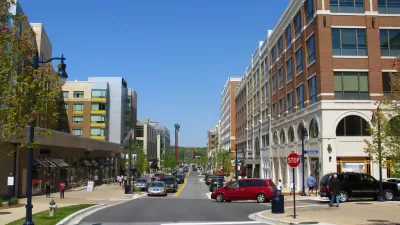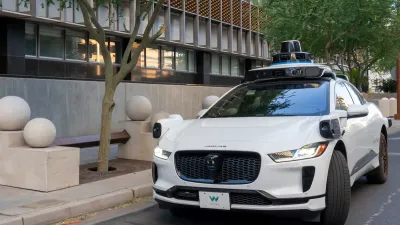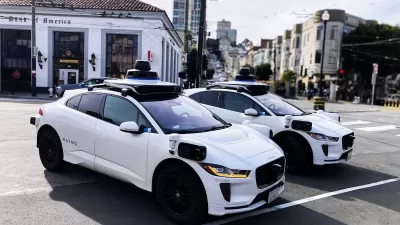An MIT study determined that traffic lights, and their inefficiencies, could be eliminated if all vehicles were equipped to regulate their speed and "batch" together as they approach intersections.

Less a fully autonomous system than an extension of cruise control, the slot-based network could take away the need to wait at traffic lights. "The basic idea is that actors in a system are grouped into batches, and the speed of their movement is carefully controlled to move them more efficiently through a space."
Carlo Ratti and Paolo Santi of MIT have released a study that examines how cars could communicate to navigate intersections without coming to a stop. The system relies on sensors that relay a vehicle's trajectory to a central computer, which can then control that vehicle's speed and group it with other cars before arriving in the intersection.
Essentially, writes Kelsey Campbell-Dollaghan, "What Santi and Ratti are proposing is a super-intelligent piece of software that could take the basic model of a stoplight—cycling between stop and go—and speed it up," so that all vehicles continue through the intersections at slow but steady speeds.
Of course, the article notes, slot-based design has to contend with the same barrier autonomous vehicles face: a human unwillingness to give up control.
FULL STORY: MIT's Not-So-Crazy Plan To Get Rid Of Stoplights

Alabama: Trump Terminates Settlements for Black Communities Harmed By Raw Sewage
Trump deemed the landmark civil rights agreement “illegal DEI and environmental justice policy.”

Study: Maui’s Plan to Convert Vacation Rentals to Long-Term Housing Could Cause Nearly $1 Billion Economic Loss
The plan would reduce visitor accommodation by 25% resulting in 1,900 jobs lost.

Planetizen Federal Action Tracker
A weekly monitor of how Trump’s orders and actions are impacting planners and planning in America.

Wind Energy on the Rise Despite Federal Policy Reversal
The Trump administration is revoking federal support for renewable energy, but demand for new projects continues unabated.

Passengers Flock to Caltrain After Electrification
The new electric trains are running faster and more reliably, leading to strong ridership growth on the Bay Area rail system.

Texas Churches Rally Behind ‘Yes in God’s Back Yard’ Legislation
Religious leaders want the state to reduce zoning regulations to streamline leasing church-owned land to housing developers.
Urban Design for Planners 1: Software Tools
This six-course series explores essential urban design concepts using open source software and equips planners with the tools they need to participate fully in the urban design process.
Planning for Universal Design
Learn the tools for implementing Universal Design in planning regulations.
Caltrans
Smith Gee Studio
Institute for Housing and Urban Development Studies (IHS)
City of Grandview
Harvard GSD Executive Education
Toledo-Lucas County Plan Commissions
Salt Lake City
NYU Wagner Graduate School of Public Service





























